Ulanzi and Lulxi light panel shootout
I have had a few conversations with people recently about Luxli Fiddles being discontinued. Apparently they have been out of stock for a few weeks now and there doesn’t seem to be any indication as to when they might be available.
So I asked around to see what others were using and one name that kept coming up was Ulanzi, which is a Chinese manufacturer of a variety of photography elements, mostly centering around smartphone and mobile content creators. Their product line includes travel tripods, mounts, cages, stabilizers, and some lightweight LED lighting options. These lighting options include ring lights, small stand lights, and on-camera panels, the latter of which I was interested in as an alternative to the Luxli panels.
I ordered the $30 VL49 Pro and the $40 LT002 7” RGB video light. The former is a square format about 2 1/2” in either direction on the face and slightly thicker than 1”, the latter is 3” by 5 1/2” and less than 3/4” thick. The exterior is all plastic with a built-in white plastic diffuser covering the entirety, for a very elegant look. Both units have a 1/4”-20 thread on the bottom for tripod attachment and a USB-C receptacle (the VL49 is on the side and the 7” RGB is on the bottom). There are magnets on the back on both and the VL49 also has them on the top and sides.
Power is via a switch on the side and fixture controls are via four buttons on the back: mode control, menu control, up and down. Mode control switches between variable white, variable color, and preprogrammed scenes, menu control changes what menu functionality you are changing (color temperature or intensity), and up and down increase or decrease the setting (take the color temperature up, for example). A small, rectangular, monochrome 1” LCD shows the current mode, setting, and fixture intensity.
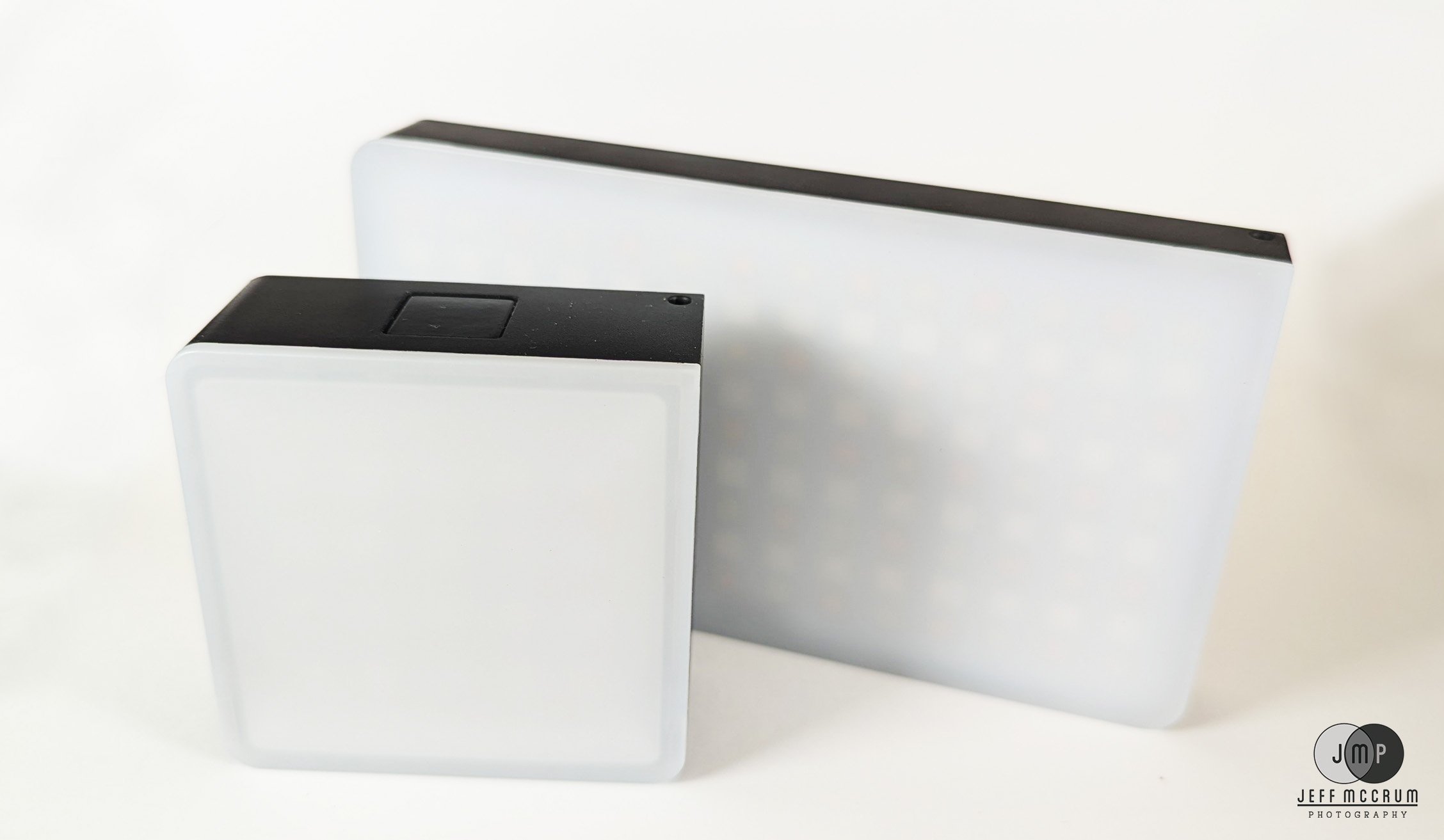
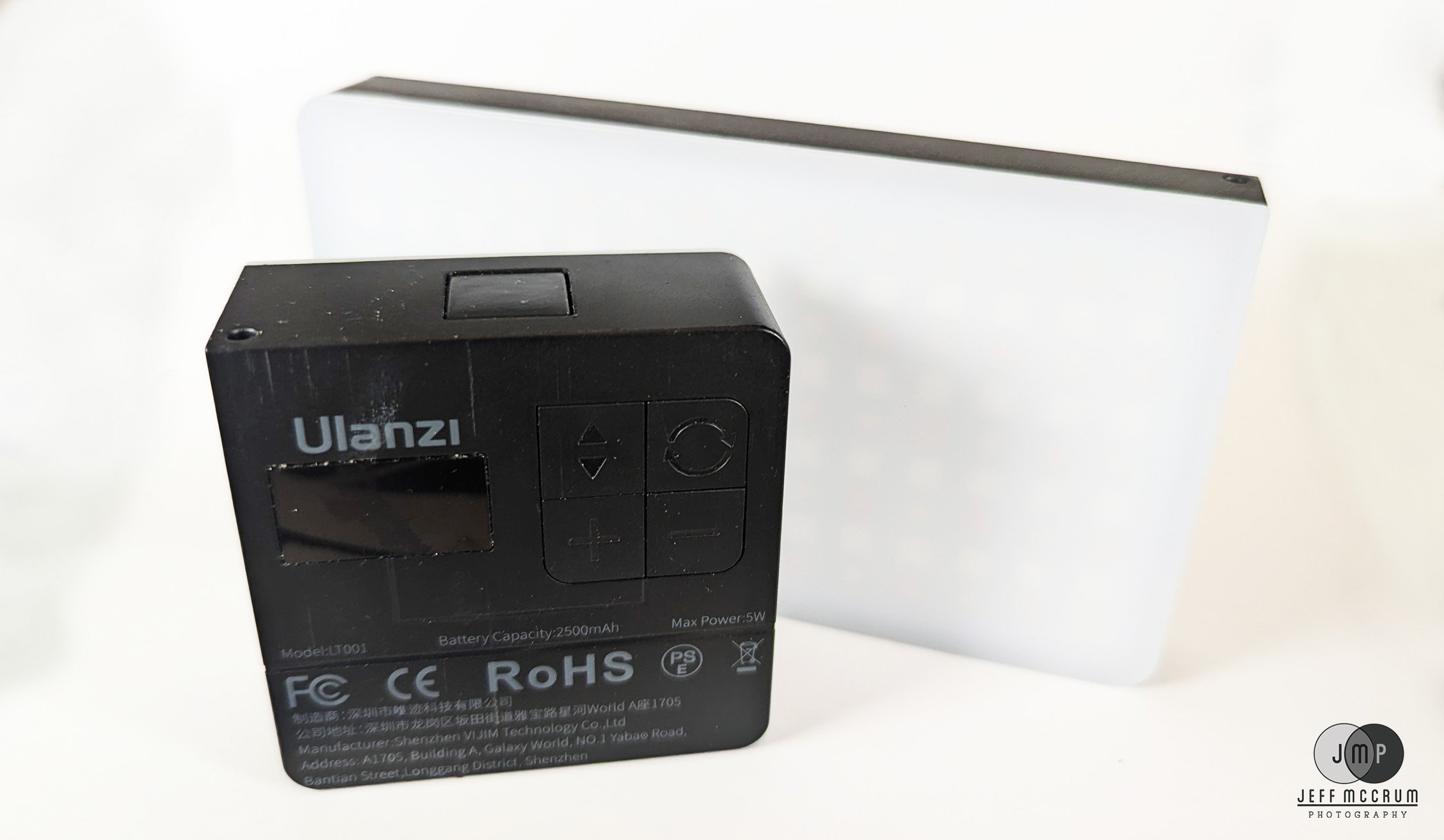

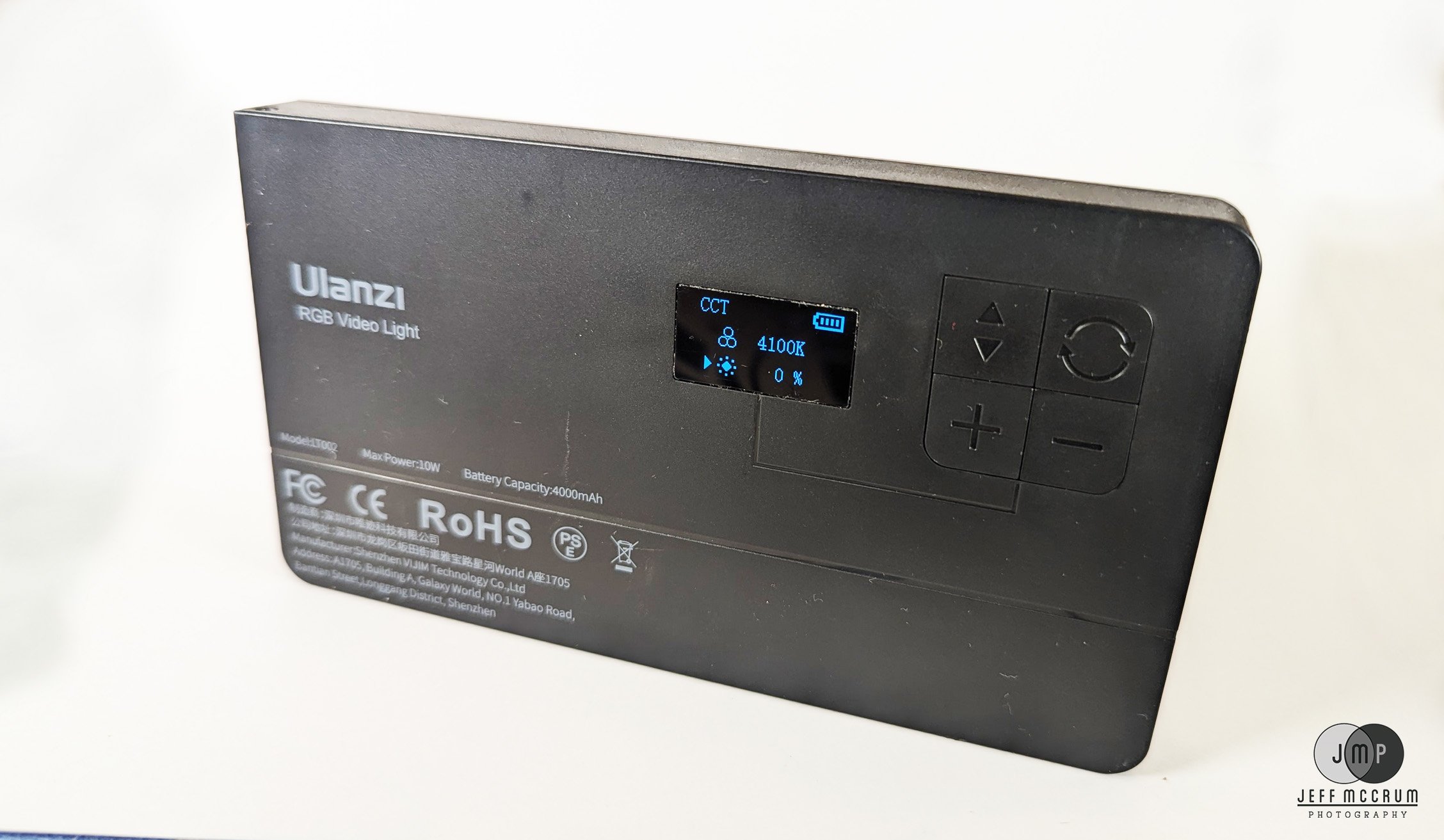
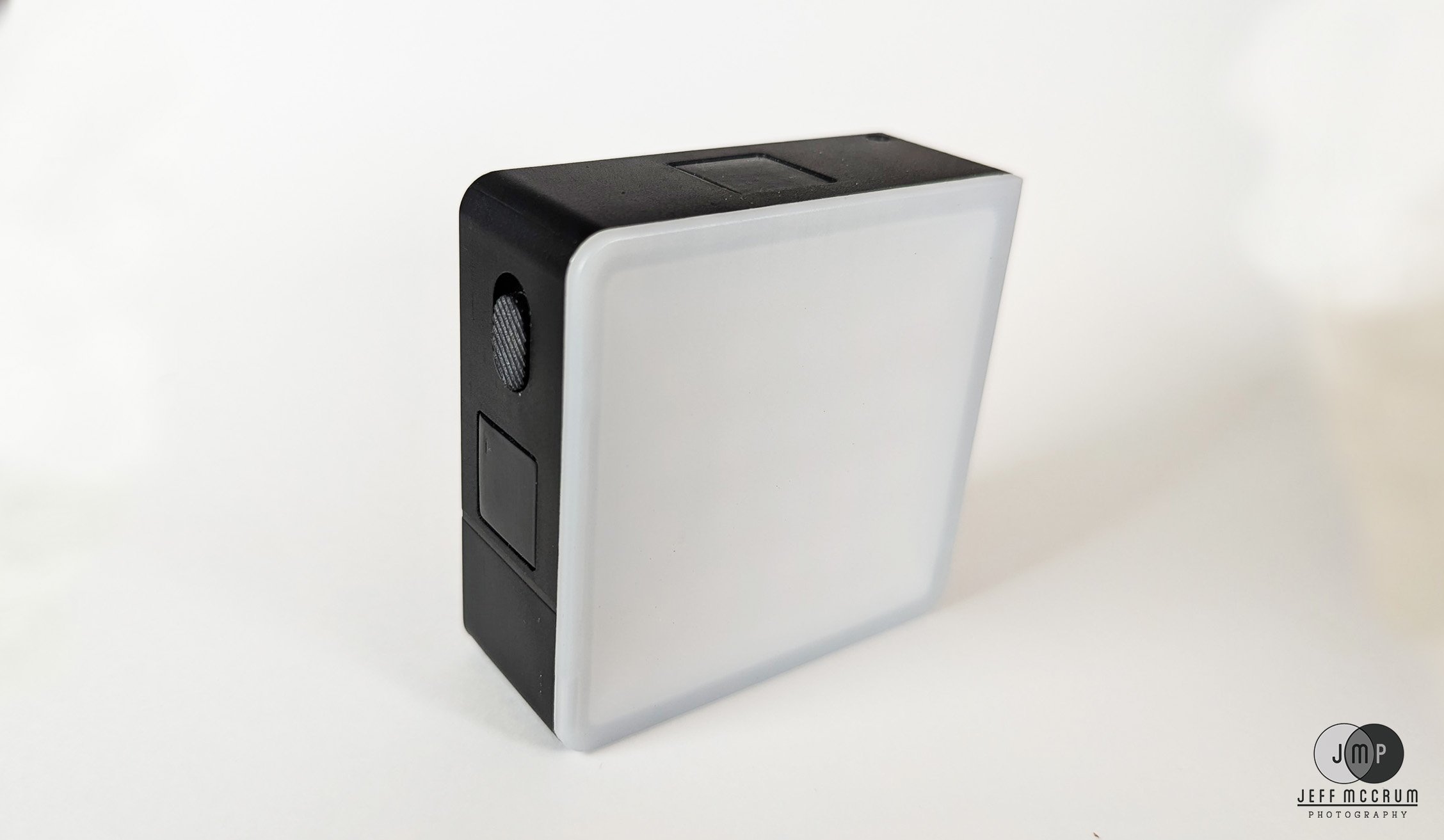

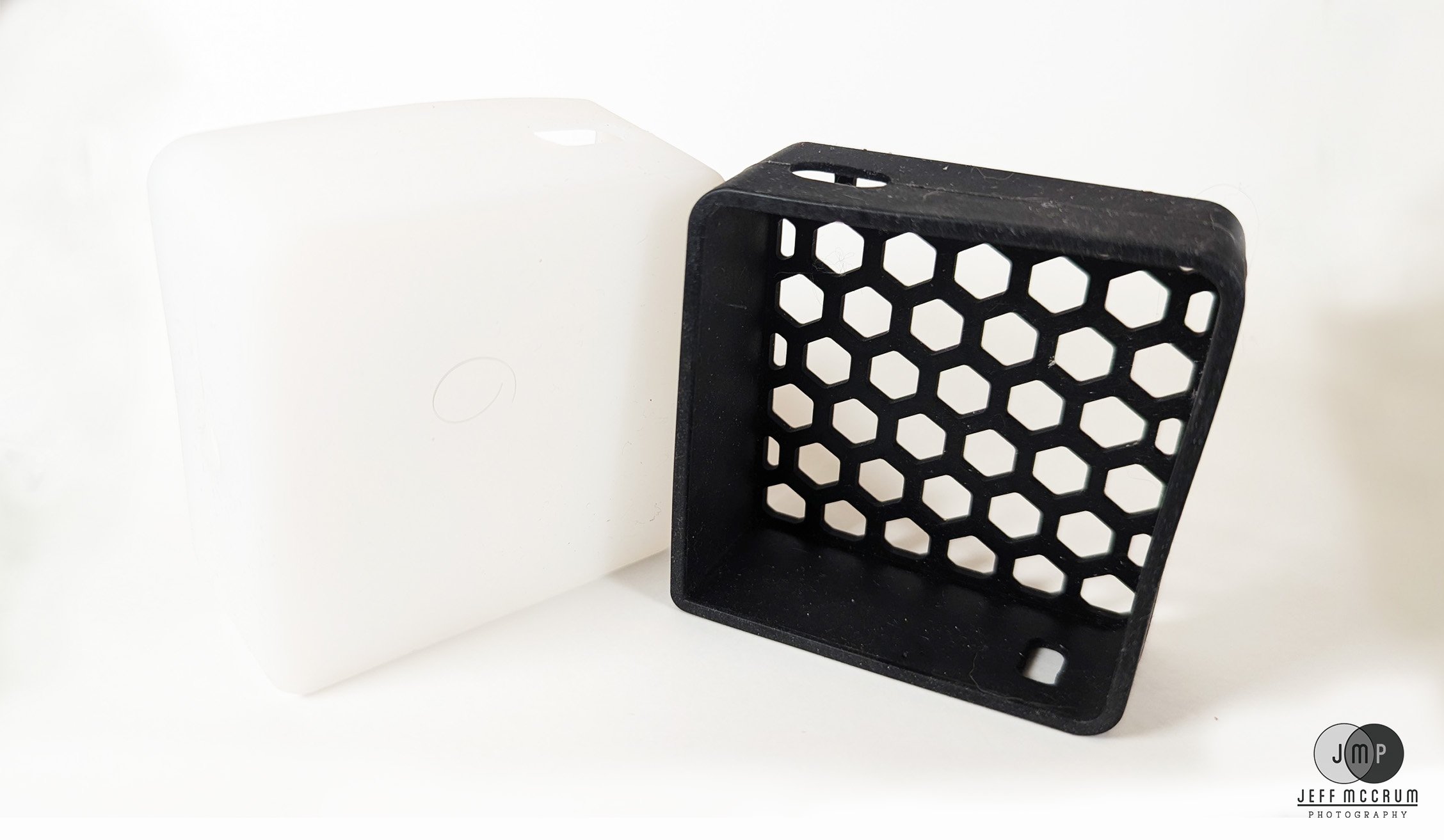
Functionality is the same on both fixtures and I suspect they are using the same chipset on both units. Settings include variable white from 2500-9000K, RGB color (adjustable Hue from 0-360 degrees and saturation from 0-100), along with 20 creative light scenes that essentially flash the fixture in different configurations like emergency vehicles, flame flickering, and rainbow chases. All of these are adjustable in brightness from 0 to 100. Accessories in the box include a white silicone diffuser, black silicone hexcell louver, power cable, and two small adhesive metal panels that can be placed to allow magnetic attachment anywhere they will stick.
At 4100K the Luxli Fiddle is about 87 footcandles at 24” and the Ulanzi 7” is 26 footcandles (the VL49 Pro is 13 footcandles) at the same distance; this is mostly due to the Luxli using 18 watts and the Ulanzi’s 10 watts of power, but the built-in diffuser of the Ulanzi accounts for the remaining difference. However, the Ulanzi is much smoother as a wash unit as a result. The Luxli claims a 102 degree beam and the Ulanzi claims 120 degrees but the reality on the Ulanzi is closer to a 180 degree beam. The included hexcell grid for Ulanzi is something I would recommend for typical use in order to have some level of control, but the light loss will be significant, about halving the intensity.
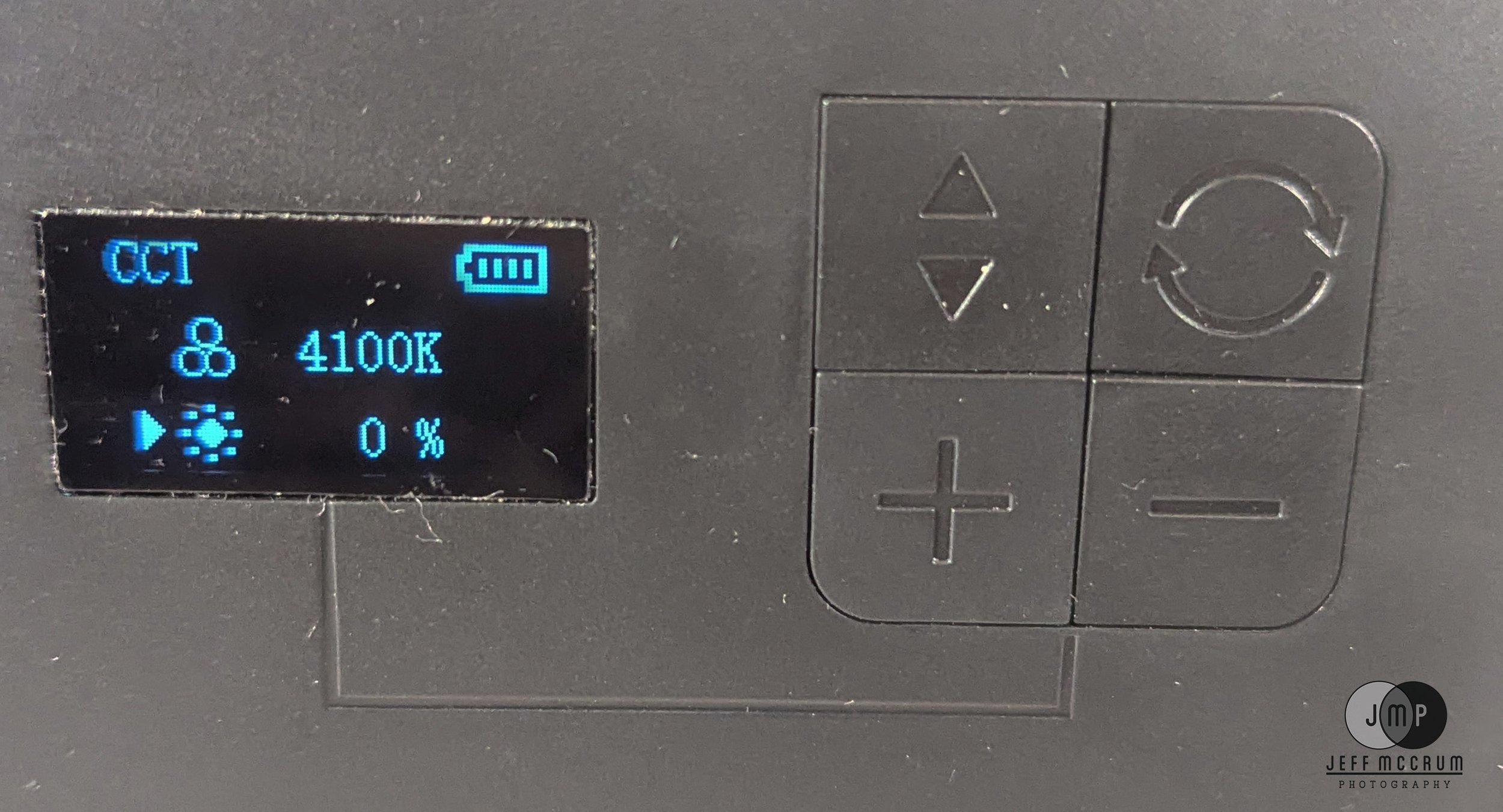

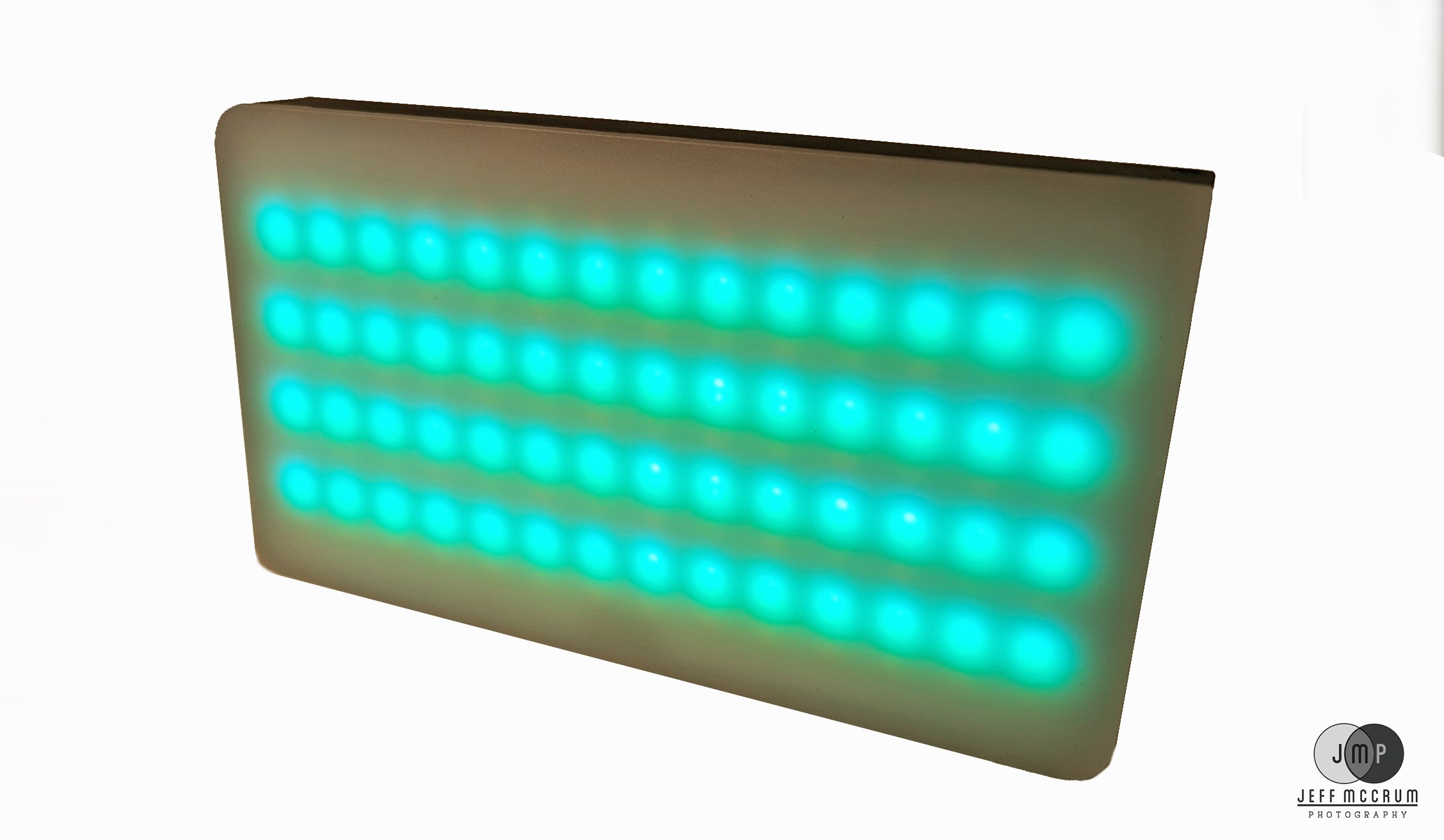
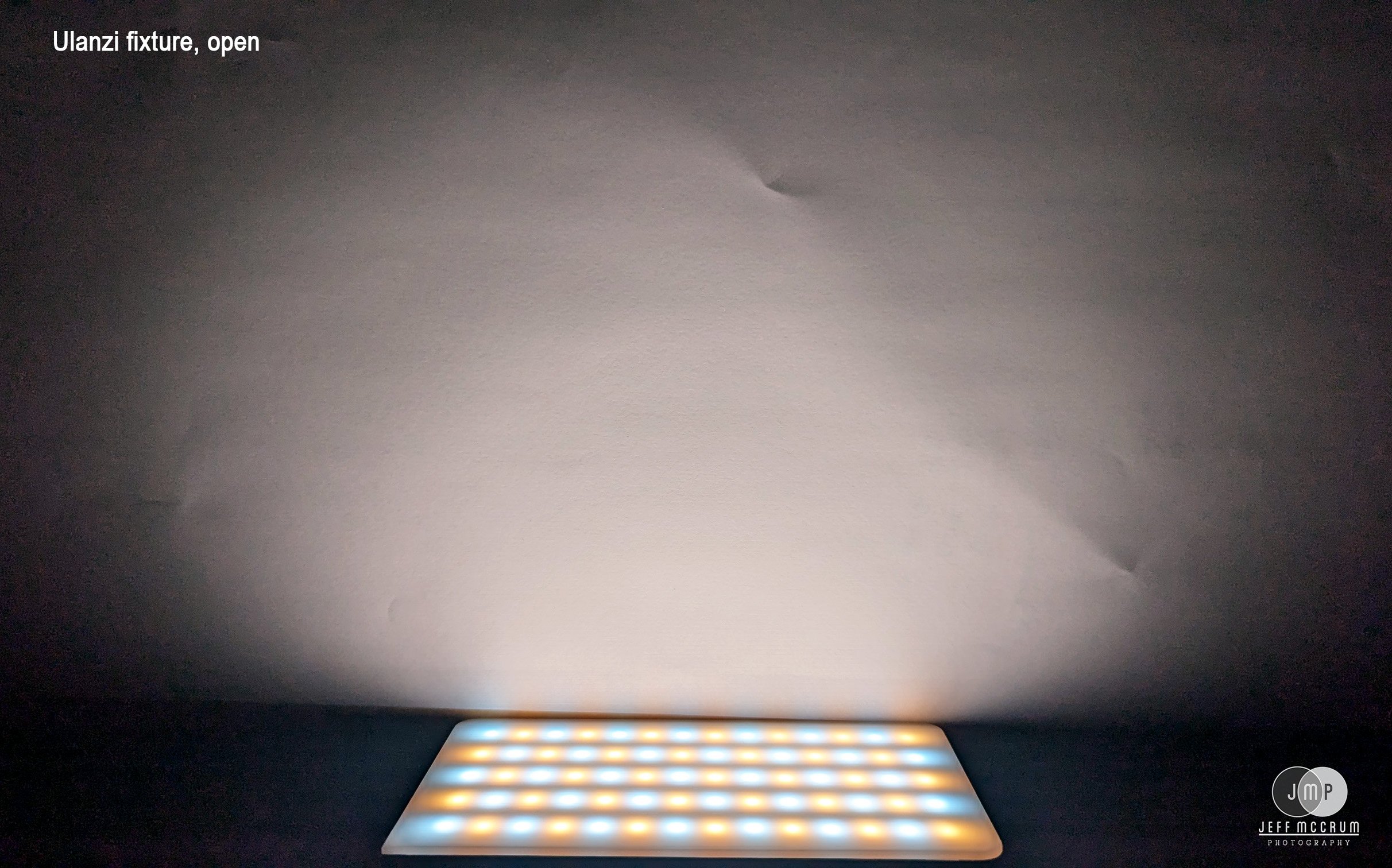
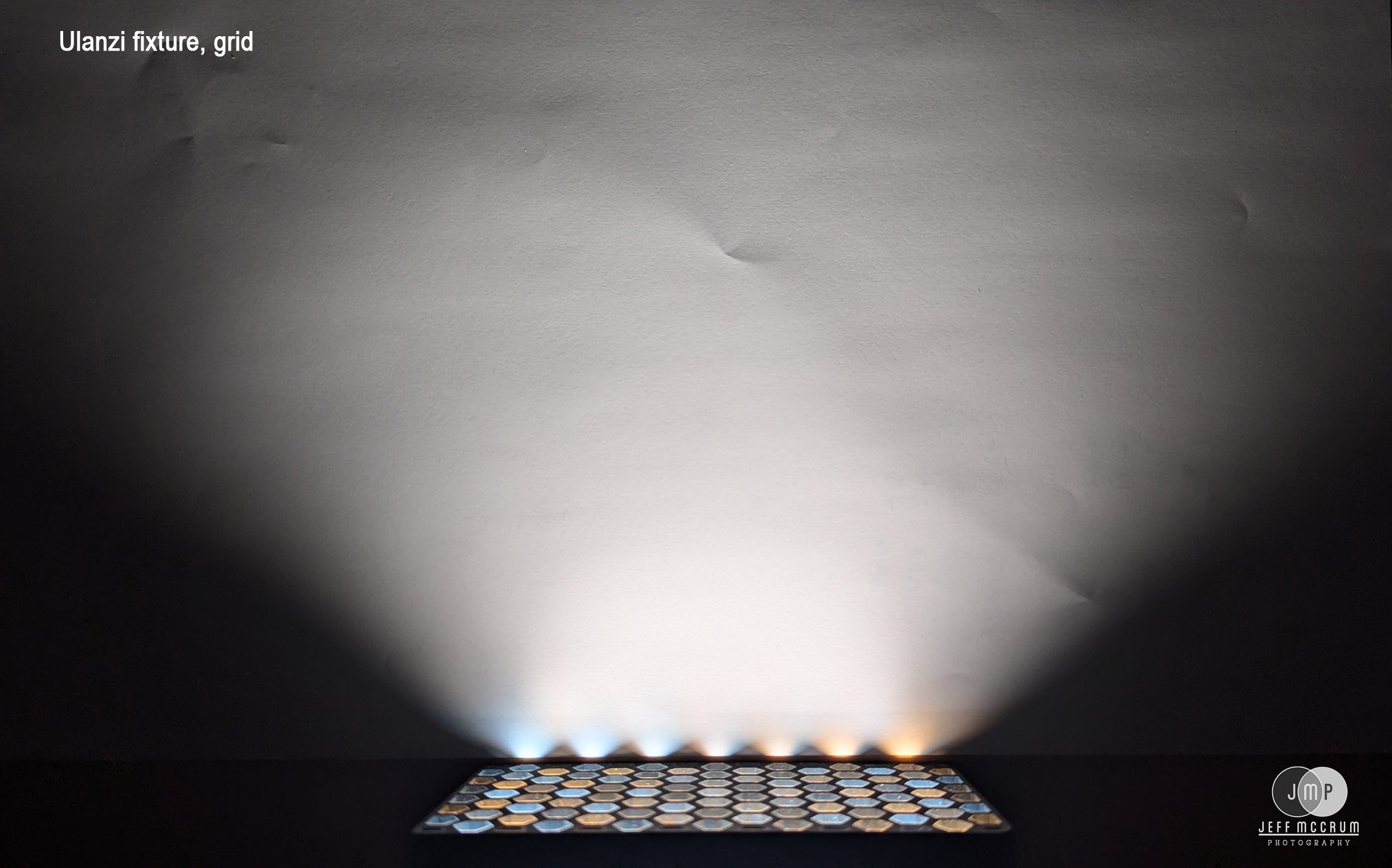
Performance-wise the fixture is classified as having a 95+ CRI, similar to other LED panels of this size. CRI is short for Color Rendering Index, which is a metric based on the percentage of light wavelengths reflecting off fourteen specific color chips picked in the 1960’s. It may not be the best metric but it is the one currently in use by a number of manufacturers. I feel the best way to compare things is to look at comparisons of the same colors under different conditions and the X-Rite ColorChecker happens to have eight of the fourteen colors for CRI and eight steps from white to black so it seemed like the perfect way to compare the 95+ CRI sources of the Luxli Fiddle and the Ulanzi.
For comparison, consider that the sun, with its broad full spectrum, has a CRI of 100, as do halogen and incandescent lamps. A source with 95+ CRI is therefore missing over four percent of the visible light wavelengths. One concern is where in the color spectrum these lights are missing. With most LED sources, the loss ends up being in some of the more robust reds.
I set up an X-Rite ColorChecker and a camera and captured the Luxli Fiddle set to 5600K, natural daylight on a cloudy day, and the Ulanzi 7” RGB also set to 5600K. As you can see from the image below the sun’s full spectrum provides some additional red tones that the Luxli and Ulanzi are not able to replicate. (Again, this is fairly common with LEDs and can be clearly seen in the top two and last two colors.) The blue, green, and yellow colors, which have the least amount of red, are fairly closely replicated. The eight tones from white to black are also within reasonable metrics of similar.
Now that we better understand how LEDs are doing at replicating the sun, the question then became about how well they do against each other. How does the $40 Ulanzi look compared to the $260 Luxli? The answer is “incredibly well” as you can tell from the images below where the daylight column has been removed and the two LED fixture color charts are placed next to each other. In the whites the Ulanzi shows a slight magenta tone in comparison to the Luxli panels. This is also visible in tones 2, 3 and 4 on the left, where the lavender, periwinkle and aqua tones have a cooler green tint in the Luxli and the 5, 6, and 7 tones are slightly warmer on the Ulanzi due to the magenta shift.
Real World Use:
I had the opportunity to try out the Ulanzi on a workshop I was hosting on 47 acres of vintage cars with the intent of seeing how well the panels worked outside, where I assume most people would be using them. This also gave me the opportunity to test out the white and color options in comparison with the Luxli panel. The intensities are vastly different so when set to white the Luxli panels had to be dialed down to about 25% of whatever the Ulanzi was set to in order to balance, when shooting a variety of colors then the intensities will always be different regardless.
Upon arrival I brought out the smaller Ulanzi fixture to start and, although it was fully charged it did not turn on, only emitting a small buzzing noise that electronics should not have. So it went back in the bag and I changed to the 7” panel instead which did not have any issues. The smaller panel did end up working about an hour later for reasons unknown and has remained operational since so I remain unsure as to what the is or was.
Overall the Ulanzi fixture worked well, incredibly so for its price range. While it produces lower light levels than the Luxli, it was useful for night photography and I was very happy with the results. In white light, the only shots where the color difference was noticeable were those when the fixtures were all set to 4100K and only on the all-white car. The color images were impossible to determine which fixture was where without notes.
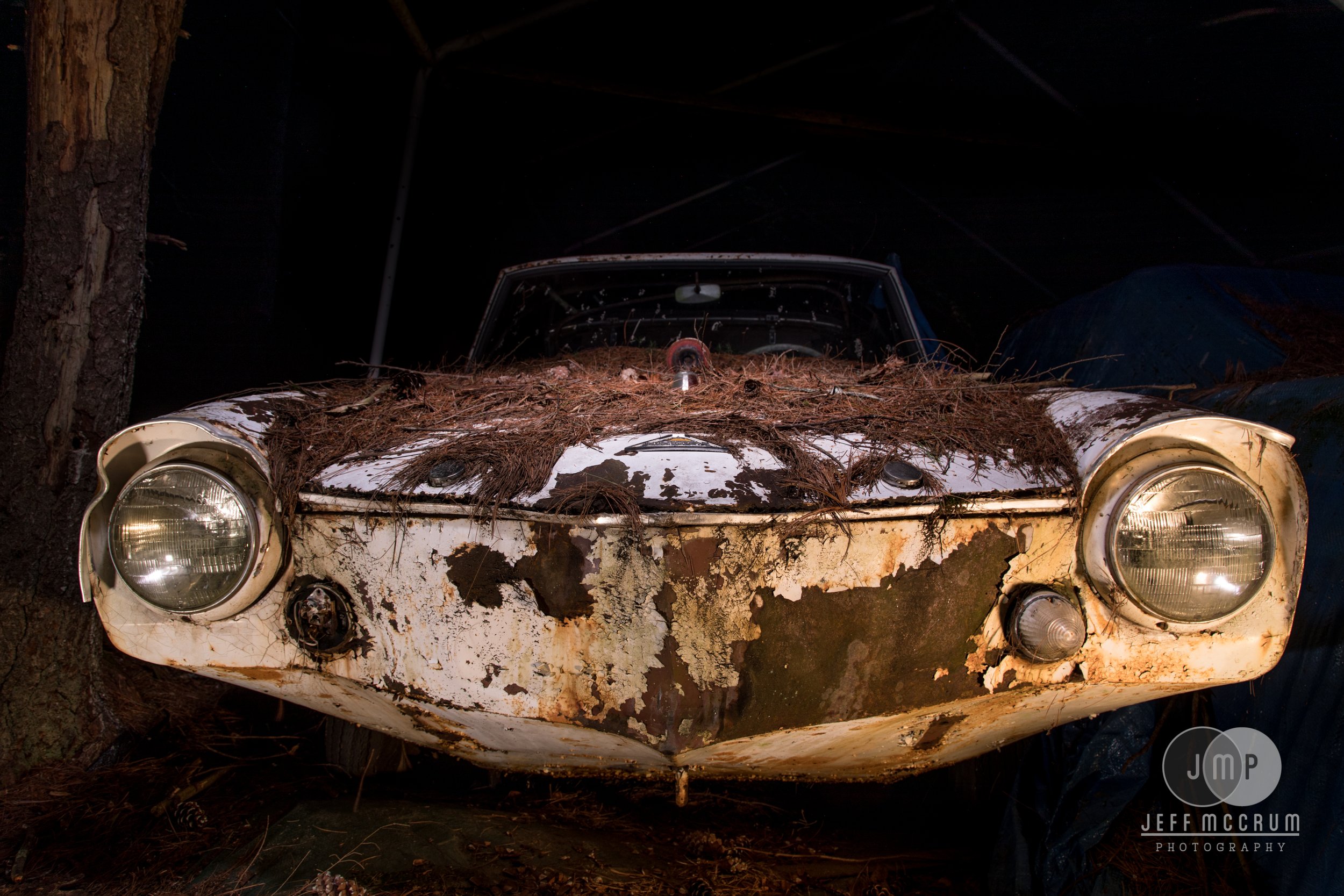
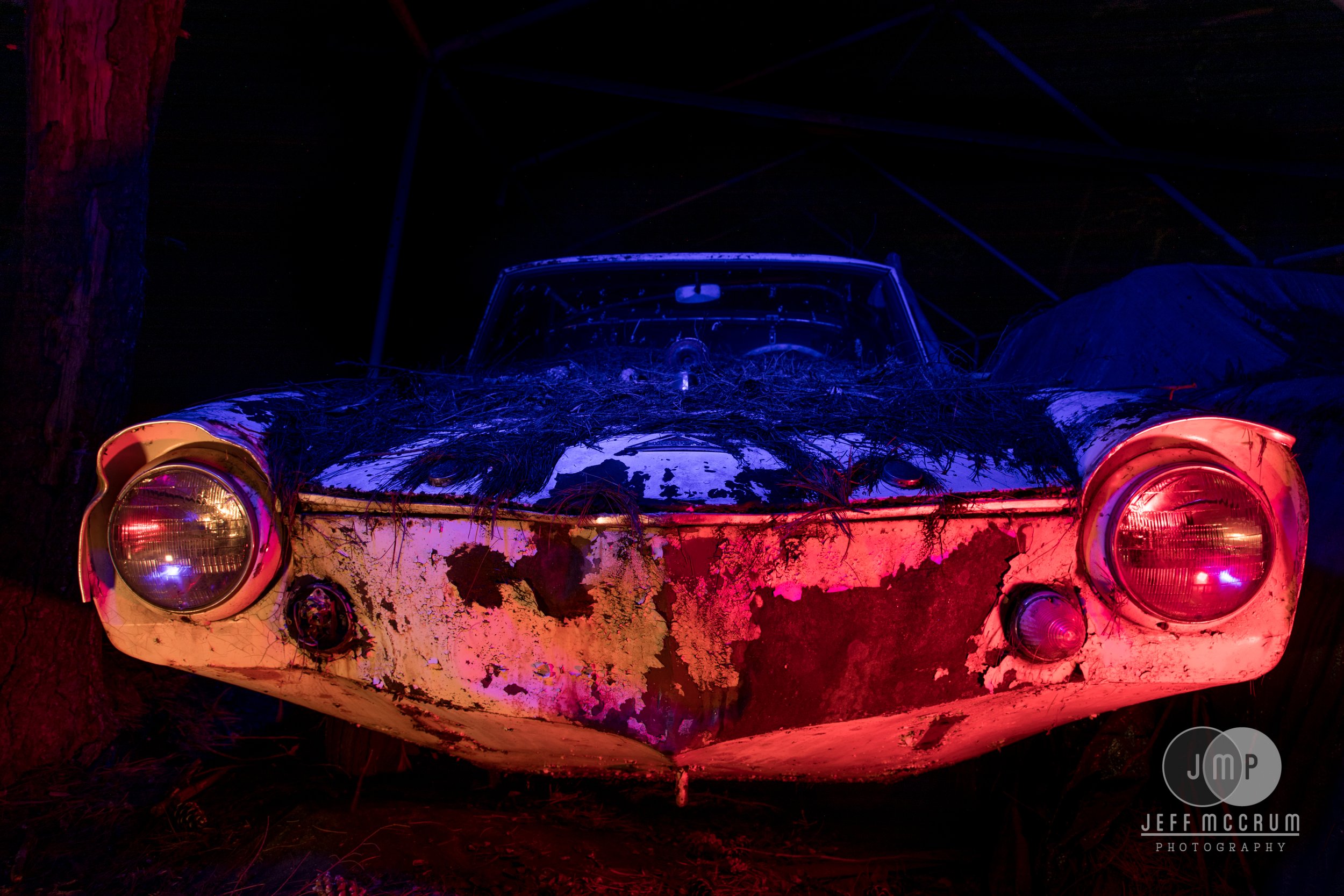
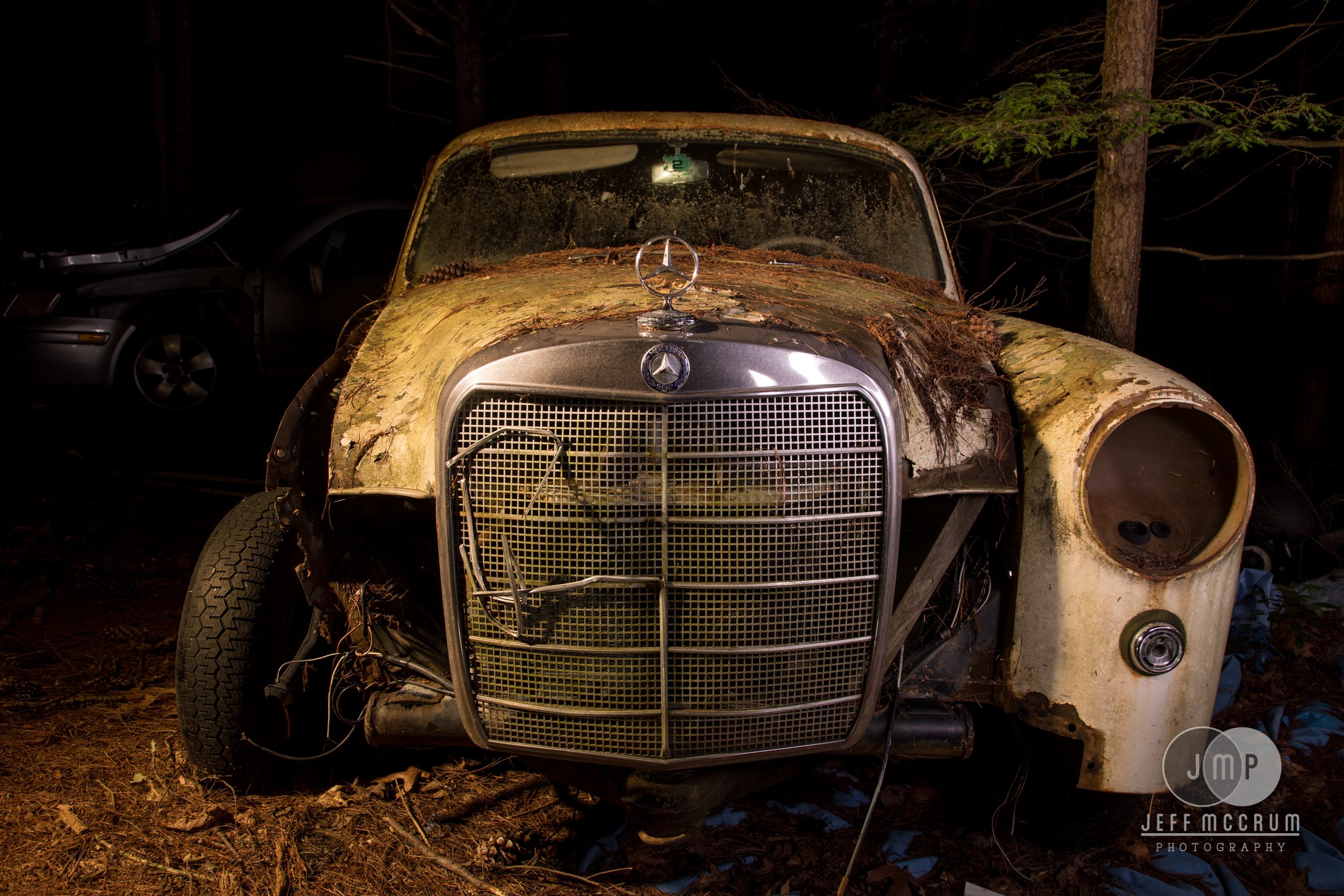

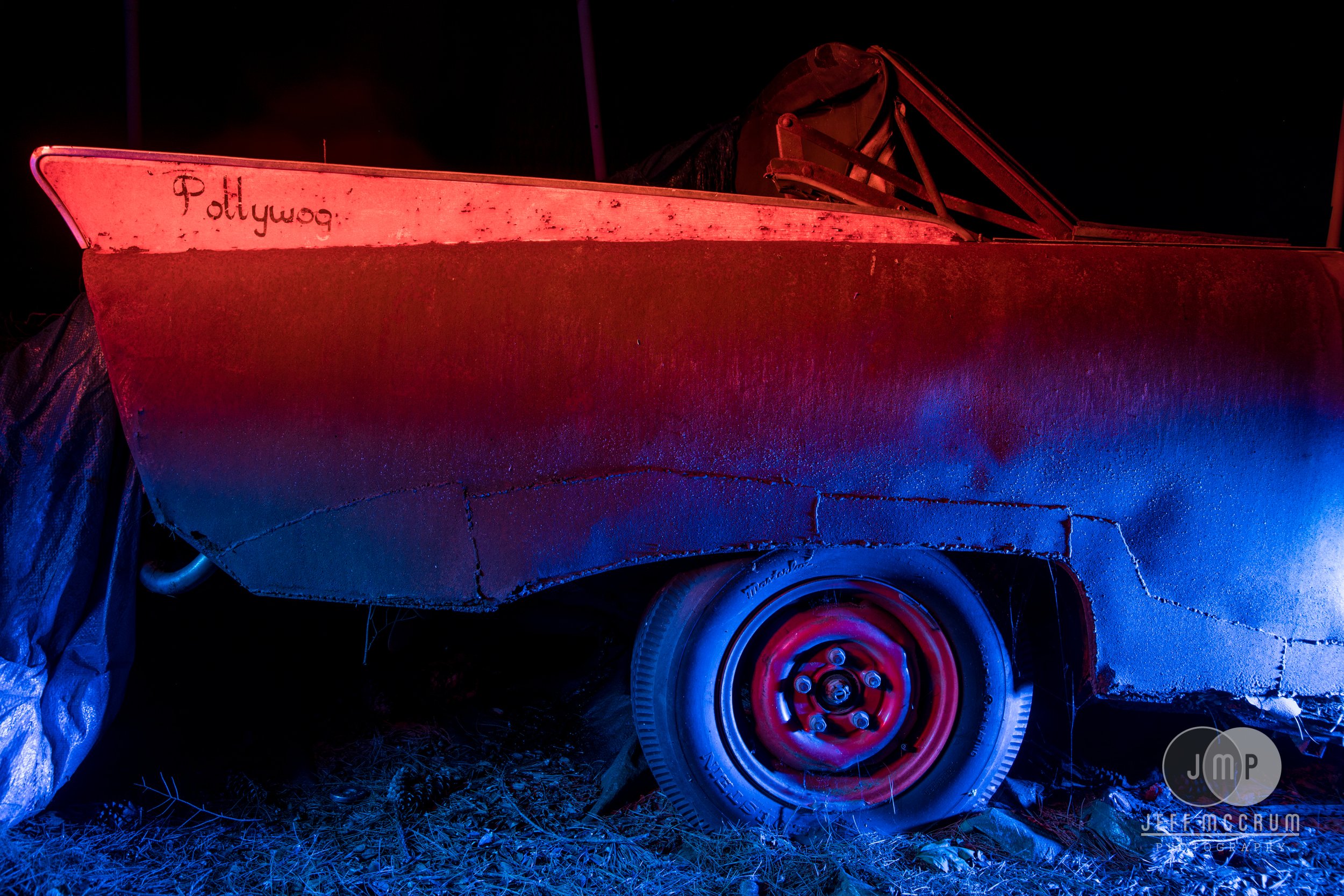
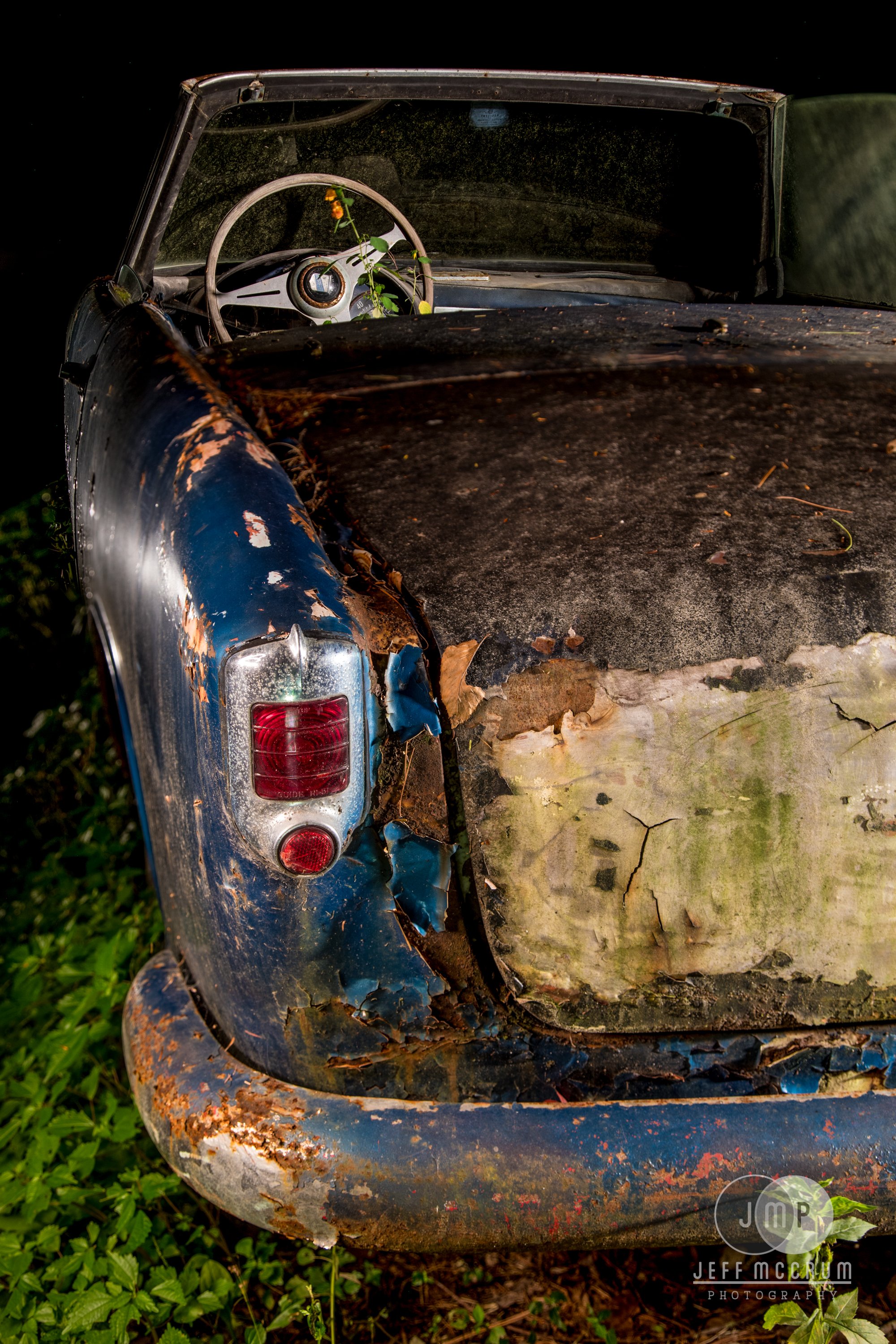
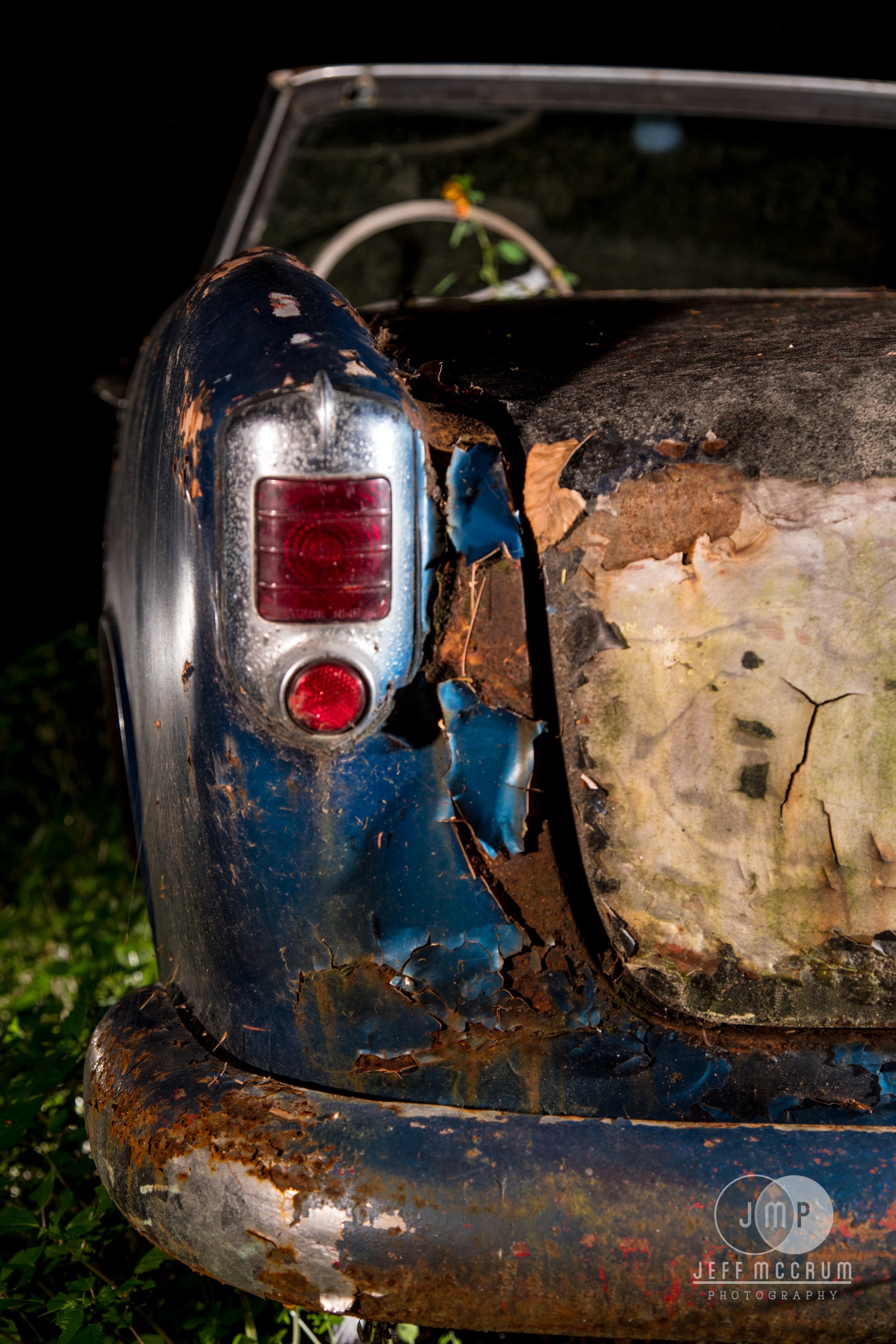
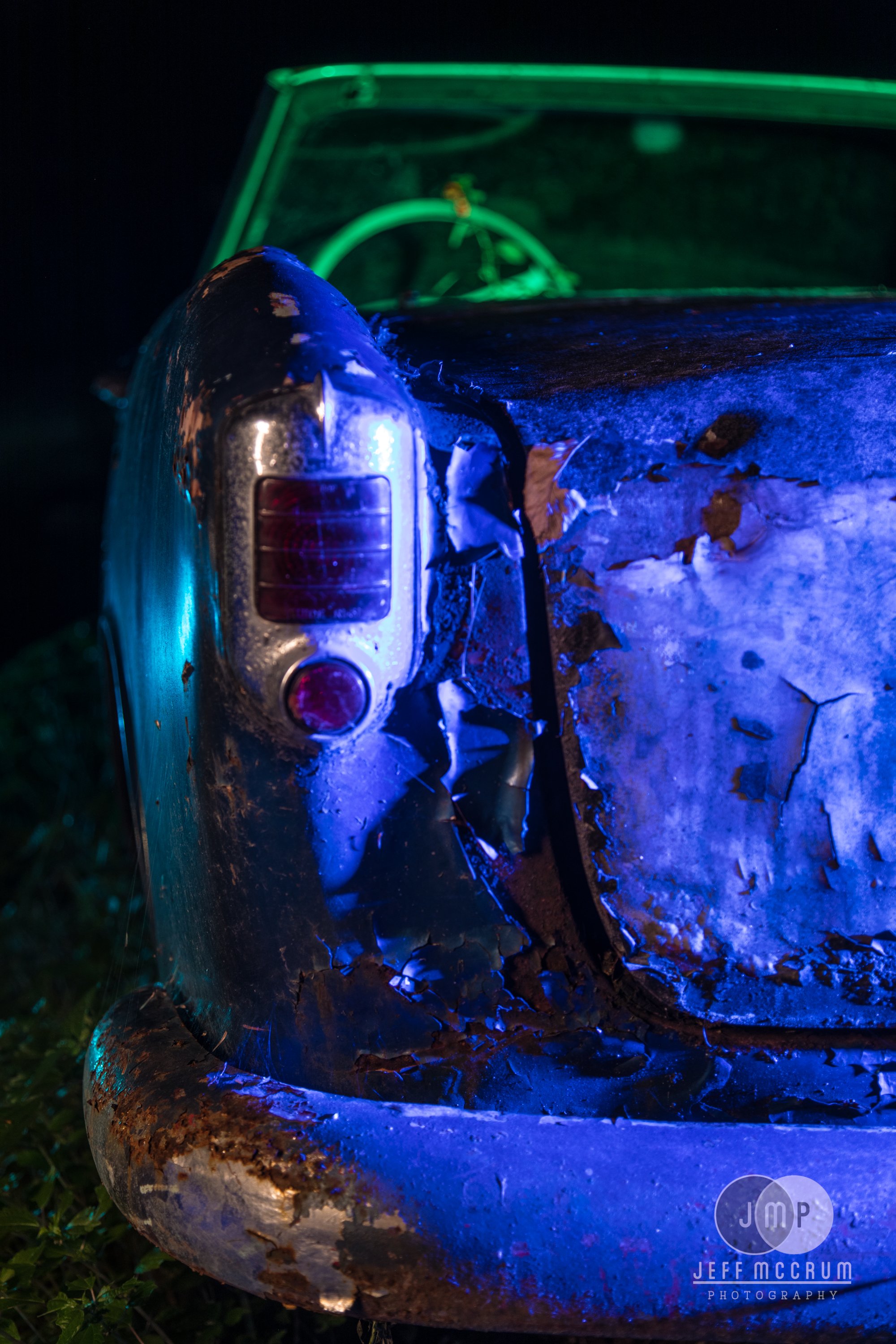
Conclusion:
Overall the fixture colors are very similar and if the Luxli Fiddle continues to have supply issues the Ulanzi fixture line is certainly worth consideration, especially at the price. There’s certainly going to be a space in my bag for these units, as they’re small enough to fit anywhere and functional enough to adapt to my typical manner of shooting.
There are practical considerations to be kept in mind however. First up is the build quality. The all plastic housing simply can not be compared to a cast aluminum housing of the Luxli. I still have no understanding if the smaller Ulanzi is going to fail again in the future. Secondly, the button quality does give me pause, as they feel like they might fail at some point. I do wish there was some finer granular control than the Ulanzi has, stepping through 100K adjustments with no ability to modify the green and magenta tones and brightness is in 1% steps from 0 to 100, but the fact that the fixtures are not bright to begin with helps out.
The Bluetooth connectivity and app for the Luxli provides a tremendous amount of flexibility, especially when lights have been placed and focused. Not needing to touch them again saves a lot of time when correcting adjustments. The next panel I look into as a Luxli Fiddle replacement will need to have Bluetooth capabilities; there is a lot of range financially between the $40 Ulanzi and the $260 Luxli. While I appreciate the Ulanzi units coming with grid accessories, the light loss is significant. Similar to the Luxli, the beam could be tighter and there could be more control over the spill light, which is something that I will be looking to rectify. I am aware that SmallRig makes the Bluetooth enabled RM75 which has piqued my interest with its capabilities, but the fact that it is only 5 watts means it should only have a similar performance with the VL49 Pro.
In summary, the Ulanzi RGB LED units are worth the price, and the color and white rendering is comparable to the Luxli Fiddle. The issues are more than offset by the cost savings even if they require me to walk over to them more often. If you need something before Luxli can come up with a replacement for the Fiddle, these Ulanzi RGB panels should hopefully last long enough.



